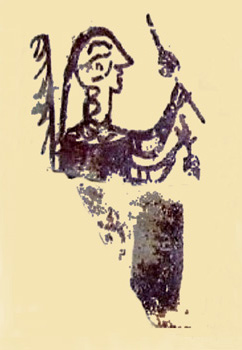Technology and production of reddish purple vegetable dye in the Bronze Age and Iron Age: written sources and textile remains in the Iberian Peninsula
 Resumen
Resumen
The knowledge of dyeing techniques dates back to very early times; colour has been an important part of the most ancient cultures. Red hue dyes, such as reddish purple, have played an important role as distinctive marks of social and religious status, especially since these may have been intimately connected to the symbolism and archetype of blood from prehistoric times.
Threads dyed in red shades have been found in some Neolithic settlements in the Middle East, in ancient Mesopotamia and at Charavines, Isère, France (c. 2450 BC). Due to their early date, there are no written sources which describe the exact nature of the colourants used for reddish purple ancient textile remains. It is likely that the inhabitants of the Iberian Peninsula, during the Bronze Age, also dyed their clothes in a reddish purple colour - as found with other Mediterranean cultures. Since no records of the raw material exist, we can only speculate about material used and the methods of extraction required to obtain such dyes. To develop an understanding of this process, this paper reviews the oldest written sources concerning these dyes, together with the information about the dyes obtained through dye analysis of the extant ancient textiles. These considerations leave little doubt that the natural dyes used for reddish purple dye were primarily of local origin and therefore autochthons to the Iberian Peninsula.
 Descargas
Descargas
Descargas
Publicado
Cómo citar
-
Resumen450
-
PDF 310
Número
Sección
Licencia

Este obra está bajo una licencia de Creative Commons Reconocimiento-NoComercial-SinObraDerivada 4.0 Internacional.
Con la publicación impresa de los trabajos, los/as autores/as aceptan que el Departament de Prehistòria, Arqueologia i Història Antiga de la Universitat de València pueda permitir la difusión y el libre acceso a través de las direcciones electrónicas y enlaces del editor/a.
El contenido de los trabajos es responsabilidad de los/as autores firmantes y no expresa la posición ni la opinión del Consejo de Redacción.
Las obras que se publican en esta revista están sujetas a los siguientes términos:
1. La revista conserva los derechos patrimoniales (copyright) de las obras publicadas, y favorece y permite la reutilización de las mismas bajo la licencia indicada en el punto 2.
2. Las obras se publican en la edición electrónica de la revista bajo una licencia Creative Commons Reconocimiento-NoComercial-SinObraDerivada 3.0 España (texto legal). Se pueden copiar, usar, difundir, transmitir y exponer públicamente, siempre que se cite la autoría, la url, y la revista, y no se usen para fines comerciales.
3. Los/as autores/as están de acuerdo con la licencia de uso utilizada por la revista, con las condiciones de auto-archivo y con la política de acceso abierto.
4. En caso de reutilización de las obras publicadas debe mencionarse la existencia y especificaciones de la licencia de uso además de mencionar la autoría y fuente original de su publicación.



